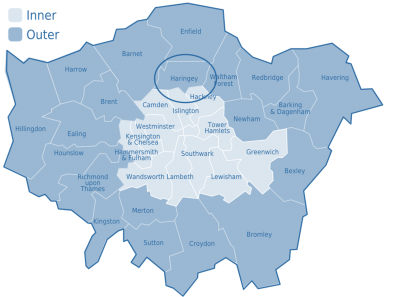Chair of London Councils and Leader of Haringey Council, Claire Kober’s resignation as both leader and councillor on 30 January in response to the development vehicle (HDV) planned in the borough marks the beginning of the end for the controversial project. Cllr Kober has not signed off on the HDV and with new leadership likely to replace her that opposes the project it is likely to be dead in the water. This news may illustrate a general shift in policy to oppose ‘regeneration’ builds across London. If the local elections in May result in a swathe of Momentum affiliated councillors winning seats in London boroughs, local government policy on planning is likely to change radically.
Campaign groups like Focus E15 have been springing up across London in opposition to estate regeneration schemes. Figures obtained from the GLA in 2016 showed that out of 214 schemes in London that already had planning permission, there would be a net loss of 7,326 social rented homes. The study also found that between 2010 and 2014 almost 50,000 London residents were moved out of the capital to live in cheaper towns and cities.
Now the question for Haringey is who is best placed to fill the void when Cllr Kober resigns in May. There have already been some notable manoeuvrings. Deputy leader Cllr Joseph Ejiofor is naturally well placed to take over and generally regarded as an acceptable figurehead for the left. Cllr Zena Brabazon is likely to be in the running, she sits on the Housing and Regeneration Scrutiny Panel and is married to Alan Stanton, a former councillor who has been a vocal critic of the HDV. He has been a particularly vocal critic of Claire Kober, Cllr Alan Strickland – who is Cabinet Member for Housing Regeneration and Planning – and Cllr Joe Goldberg who are also standing down.
Cllr Peray Ahmet resigned on 2 January from her role as Cabinet Member for the Environment vociferously attacking Cllr Kober for poor leadership. This is widely regarded as a ploy to distance herself from the Cabinet whilst paving the way for a leadership bid by clarifying her opposition to the HDV.
Growing Momentum influence in Haringey has begun to seep into other London boroughs. In Newham the elected Mayor, Sir Robin Wales is facing a new reselection battle having served in the role for five terms. Labour members in Newham have called for the National Executive Committee to have an open vote to pick their candidate. After legal action was launched, a re-run of the trigger ballot which initially narrowly selected Sir Robin will decide whether he is automatically selected as Labour’s candidate. Notably, Sir Robin has been historically pro-regeneration something not generally favoured by Momentum activists.
Further to Sir Robin’s possible deselection, Momentum is making in-roads in the borough of Croydon Fairfield is one of the Labour target seats in the borough and two of the candidates are sympathetic to Momentum. Niro Sirisena has campaigned with the group and Chris Clark is a transport union official who worked in Jeremy Corbyn’s office during the 2017 General Election. Moreover, Caragh Skipper is a leading member of Croydon Momentum and has recently been elected as CLP Chair. She is also standing in the new ward, Addiscombe East.
Haringey Council’s transformation into the poster child for Momentum has been propelled by the success of the local housing campaigners working in collaboration with activists to oppose the HDV. The borough is also unique in that it is near the Borough of Islington, where Jeremy Corbyn has a seat and an area that is generally very supportive of his policies. Tottenham also has a history of radical politics. The key question is to what extent will the Momentum take over in Haringey manifest itself in other Labour boroughs in London?




